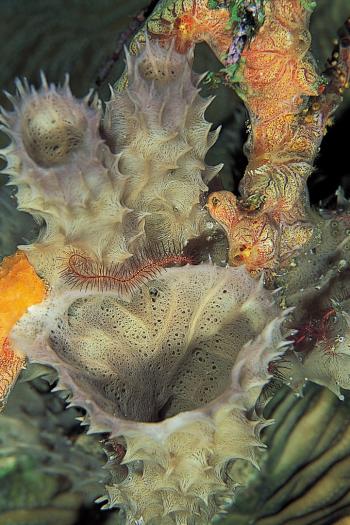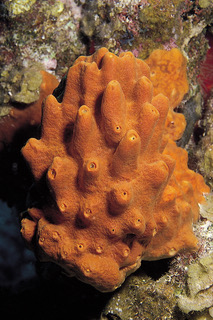
Did you know that Sponges are essential to keeping coral reefs alive?
Coral reefs are characterized by high biodiversity and low nutrient availability. This is Darwin’s Paradox: how such diverse ecosystems like coral reefs survive in the equivalent of an oceanic desert? The answer is a complex network of nutrient recycling within and among organisms, anchored by sponges.
Sponges are home to hundreds of species of microbial symbionts (bacteria and archaea) that help them influence seawater chemistry. As sponges filter huge amounts of seawater, they and their symbionts process and release carbon, nitrogen and phosphorus, contributing to nutrient cycling on coral reefs.
Sponge Poop Loop
Some sponges make carbon biologically available for other organisms through their sponge poop thereby fueling productivity throughout the ecosystem. Sponges efficiently filter bacteria and tiny plankton from the seawater. They also consume organic material sloughed off of various marine organisms, technically named dissolved organic matter (DOM). Sponges and their symbionts transform the DOM into sponge biomass. Then, very rapid cell cycling in the sponges results in the shedding of cells that serve as food to organisms that are incapable of using DOM directly. This is often called “the sponge loop.” In the process they also clean the water for more sensitive organisms like coral.
Sponge Reef Repair
In addition to their recycling and seawater cleaning roles, sponges are key in reef building and maintenance. They help fortify the framework of the reef and aid reef repair by compacting loose rubble and stabilizing it until carbonate secreting organisms can bind it permanently. Sponges also help to improve the survival of living corals by “gluing” them to the reef frame if their bases are eroded, and protecting their skeletons from excavators.

The list of what sponges do for the coral reef community isn’t complete without mentioning that sponges create habitat for a multitude of animals. They provide shelter and food for the many creatures on the reef like fish, shrimp, worms, and brittle stars.















